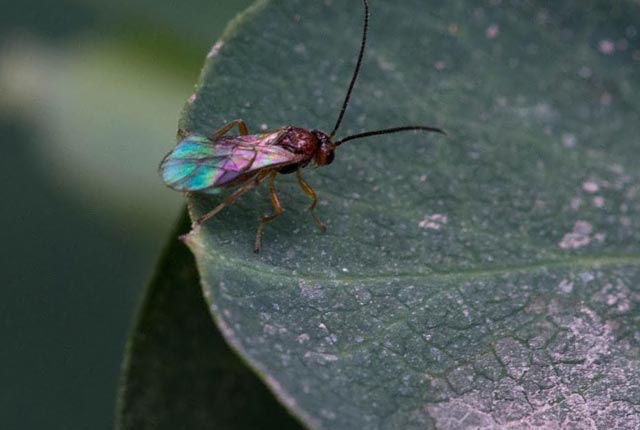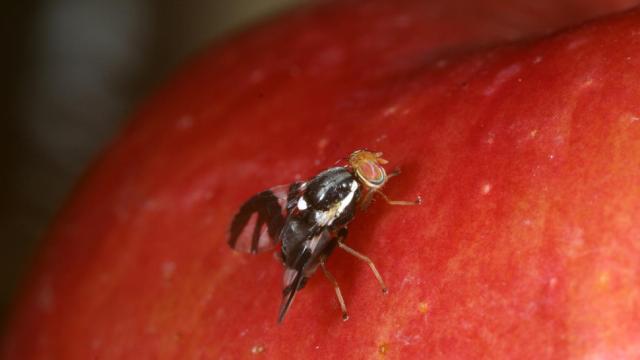When it comes to the emergence of new lifeforms, we typically think of a single species evolving into another. But as a new study of fruit flies and parasitic wasps demonstrates, the emergence of a new species can set off a domino effect that, in this case, creates not one, but several new species.
An inter-state team of US researchers has found that ongoing evolutionary changes in a single species of fruit fly is producing a cascading evolutionary effect on several species of predatory wasps. This speciation effect, or evolutionary divergence, has sparked the advent of three new wasp species.
To understand what’s happening we need to go back to a time before the 1850s.
Prior to the introduction of apples in North America, a single species of fruit fly, Rhagoletis pomonella, feasted on the fruits produced by Hawthorn trees. With the introduction of apple trees, however, a subpopulation of these fruit flies made the evolutionary jump to an apple-based diet, forever abandoning their Hawthorn-minded forebearers. Where there was one species of fruit flies, there were now two, leading the emergence of the so-called “apple maggot” fruit fly.
But the story, and the research, doesn’t end there.
“Our new work takes a close look at the evolutionary process termed ‘sequential speciation,’” noted study co-author Scott Egan in a Rice University release. “Sequential speciation identifies the fact that adaptation and speciation of one species is not an isolated process. The appearance of a new species creates new niche opportunities that can be exploited by other species, and that opportunity can promote the origin of other new species.”
In this case, those “other” species are parasitic wasps.

The parasitic wasp, Utetes canaliculatus, on a snowberry shrub, searching for its Rhagoletis fly host. (Credit: Hannes Schuler)
For the study, which now appears in PNAS, the researchers focused on three different wasp species that are known parasites to the fruit flies. Analysis shows that all three wasp species are subsequently in the process of diverging into two distinct species, both genetically and in terms of behaviour. Some wasps still feast on the old-timey hawthorn fruit flies, but some have moved on to the apple-based fruit flies. Other changes include differences in where the wasps mate and produce offspring, fruit odor preference, and avoidance behaviours.
As Michigan State entomologist James Smith points out, the “new fruit fly species provide suitable habitat not just for one new parasitoid species, but for multiple new species.”
Here’s how the researchers describe it in their study:
As flies shift and adapt to new host plants, wasps follow suit and diverge in kind, resulting in a multiplicative increase of diversity as the effects of ecologically based divergent selection cascade through the ecosystem. Biodiversity therefore may potentially beget increasing levels of biodiversity.
These evolutionary changes are known as “sequential” or “cascading” events, and they help to explain why certain organisms are more diverse than others. In particular, it may explain why there are so many insects in the world compared to other groups of organisms. What’s more, it shows how an enhanced biodiverse ecosystem can feed-off on itself, producing an even greater abundance of lifeforms.
Read the entire study at Proceedings of the National Academy of Sciences: “Sequential divergence and the multiplicative origin of community diversity“.
